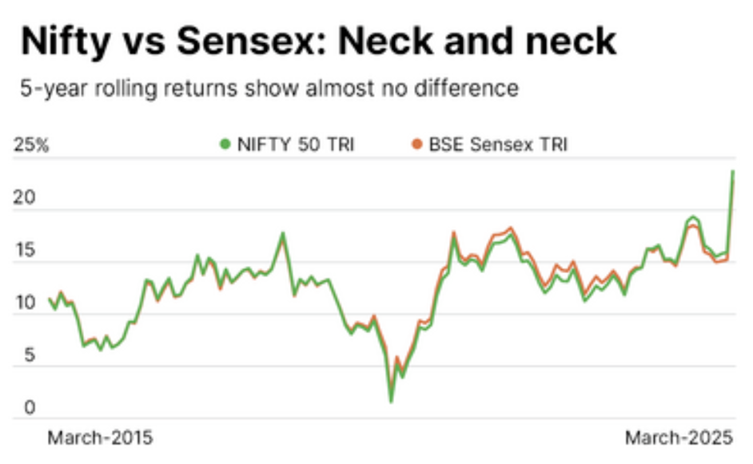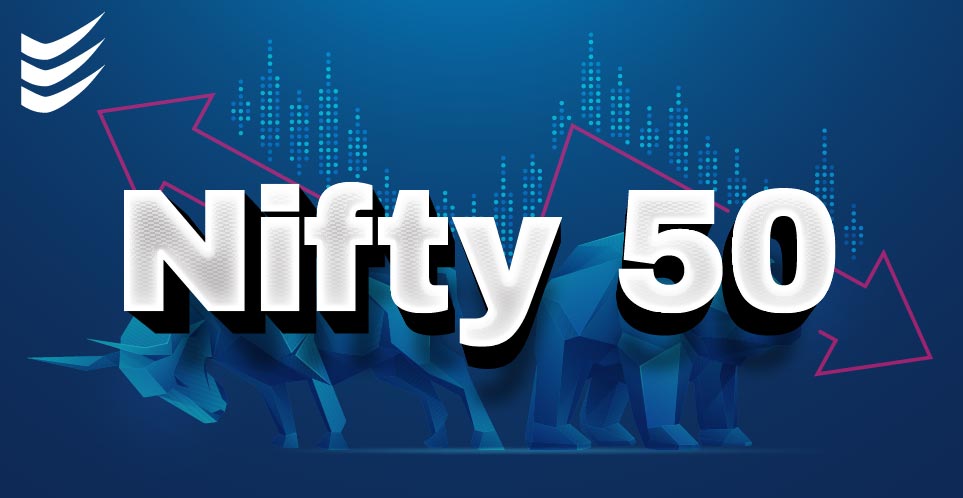Nifty 50 Companies List 2025: Unlock India’s Top Stocks & Investment Secrets
Nifty 50 Companies List 2025 is your ultimate guide to India’s benchmark stock market index. Representing the top 50 large-cap companies listed on the National Stock Exchange (NSE), the Nifty 50 is a reflection of India’s economic health, corporate leadership, and sectoral diversity.
This article will help you explore the latest list of Nifty 50 companies, sector-wise weightages, key performance metrics, top dividend-paying stocks, and how to use the index for building a smart investment portfolio.
What Is the Nifty 50 Index?
Launched in 1996 by NSE, the Nifty 50 is India’s flagship stock market index comprising 50 of the most liquid and large-cap companies. It uses the free-float market capitalization method, offering a balanced view of the Indian economy.
The index covers 13+ sectors, including financial services, IT, energy, FMCG, telecom, healthcare, and more.
🔗 View official Nifty 50 methodology and factsheet on NSE India
Why Is the Nifty 50 So Important?
-
Captures over 66% of NSE’s free-float market cap
-
Acts as a benchmark for mutual funds and ETFs
-
Provides sectoral diversification
-
Used by passive investors, fund managers, and institutions
The Nifty 50 is often seen as a barometer of market sentiment in India. Index-based products like ETFs, futures, and options derive directly from its movements.
Nifty 50 Companies List 2025
Below is a detailed snapshot of the Nifty 50 companies as of June 2025, highlighting their sector allocation and individual weightage within the index. Keep in mind that the Nifty 50 is rebalanced semi-annually, so the exact composition and weightages can change.
| Company | Symbol | Sector | Weight (%) |
|---|---|---|---|
| HDFC Bank Ltd. | HDFCBANK | Financial Services | 12.24 |
| ICICI Bank Ltd. | ICICIBANK | Financial Services | 8.38 |
| Reliance Industries | RELIANCE | Oil & Gas | 8.14 |
| Infosys Ltd. | INFY | IT | 6.42 |
| Bharti Airtel | BHARTIARTL | Telecom | 4.13 |
| ITC Ltd. | ITC | FMCG | 3.94 |
| L&T | LT | Construction | 3.98 |
| TCS | TCS | IT | 3.98 |
| State Bank of India | SBIN | Financial Services | 2.82 |
| Axis Bank | AXISBANK | Financial Services | 2.66 |
📌 Data source: NSE India, updated as of June 2025.
Nifty 50 Sector-Wise Weightage (2025)
| Sector | Weight (%) |
|---|---|
| Financial Services | 36.53 |
| Information Technology | 13.15 |
| Oil & Gas | 10.40 |
| FMCG | 7.63 |
| Automobiles | 7.23 |
| Telecom | 4.25 |
| Healthcare | 3.82 |
| Construction | 3.76 |
| Metals & Mining | 3.52 |
| Power | 2.63 |
💡 Insight: Financials remain dominant in the index, indicating strong banking sector resilience and consumer credit demand in India.
Top Companies by Weightage in 2025
-
Reliance Industries – 10.17%
-
HDFC Bank – 7.53%
-
TCS – 6.09%
-
Bharti Airtel – 6.08%
-
ICICI Bank – 5.04%
Key Performance Metrics
| Metric | Company | Value |
|---|---|---|
| ROE (Return on Equity) | Asian Paints | 31.5% |
| P/E Ratio | Titan | 93.4 |
| P/E Ratio | Coal India | 7.3 |
| ROCE | Britannia | 48.9% |
| Dividend Yield | Bajaj Auto | 6.9% |
| Price-to-Book | Nestle India | 54.2 |
| Price-to-Book | Hindalco | 1.3 |
📊 These metrics help compare value vs. growth opportunities within the Nifty 50.
High Dividend Yield Stocks in Nifty 50 (2025)
| Company | Dividend Yield (%) |
| BPCL | 8.66 |
| Coal India Ltd. | 7.08 |
| ONGC | 5.44 |
| Power Grid Corp. | 4.45 |
| ITC Ltd. | 3.46 |
💸 Investor Tip: Dividend-paying stocks are useful for conservative or income-focused portfolios.
Historical Performance: Nifty 50 vs Sensex vs Midcap
-
Nifty 50 (5-Year CAGR): ~13.8%
-
Sensex (5-Year CAGR): ~13.3%
-
Nifty Midcap 150 (5-Year CAGR): ~17.2%

⚠️ Insight: Midcaps offer higher returns but come with more volatility. Nifty 50 provides better stability and large-cap exposure.
Recent Additions to Nifty 50 (2025)
-
📈 Trent Ltd. – Retail Expansion Success
Trent Ltd., a Tata Group company, has seen strong growth through its Westside and Zudio brands, expanding rapidly across Tier 2 and Tier 3 cities. Its inclusion reflects the booming organized retail sector in India. -
🛡 Bharat Electronics Ltd. – Leader in Defense Electronics
BEL plays a vital role in India’s self-reliant defense strategy, supplying advanced electronics to the armed forces. Its consistent order book and government-backed initiatives have strengthened its market position.🧭 These additions highlight India’s evolving market structure, with consumer retail and defense emerging as key growth drivers in the economy.
Global Comparison: Nifty 50 vs S&P 500 vs FTSE 100
| Index | Focus | Market |
|---|---|---|
| Nifty 50 | Large-cap Indian stocks | Emerging |
| S&P 500 | Tech-heavy & diversified | Developed |
| FTSE 100 | Energy & Financials | Developed |
🌏 Insight: Nifty 50 offers a domestic growth story fueled by demographics, consumption, and policy support.
How Nifty 50 Powers Mutual Funds & ETFs
Popular index-based investment options include:
-
Nippon India ETF Nifty BeES
-
HDFC Index Fund – Nifty 50 Plan
-
ICICI Prudential Nifty ETF
These products track the Nifty 50 and offer low-cost passive investment vehicles for retail investors.
Factors to Consider Before Investing
-
Risk Profile: Suitable for medium-to-long-term investors
-
Diversification: In-built sector exposure
-
Costs: Index funds are cost-effective
-
Tracking Error: Choose funds with minimal deviation from the index
Benefits of Investing in Nifty 50
-
Exposure to India’s top companies
-
High liquidity and transparency
-
Regular index rebalancing
-
Lower volatility vs. mid/small-cap stocks
How to Invest via Nifty Index Funds
You can invest in Nifty 50 index funds via:
-
SIPs (Systematic Investment Plans)
-
Lump sum investments
-
ETF purchases via trading platforms
This is ideal for:
-
First-time investors
-
Retirement planning
-
Passive wealth accumulation
Risks of Nifty 50 Investing
-
Limited small/mid-cap participation
-
Can underperform during small-cap rallies
-
Market volatility
-
Currency risk (for foreign investors)
🛡️ Diversify across sectors, geographies, and asset classes to reduce risk.
FAQs on Nifty 50 Companies List 2025
Q1. What is the Nifty 50 Companies List 2025?
The Nifty 50 Companies List 2025 is an updated list of the top 50 blue-chip companies listed on the National Stock Exchange (NSE), selected based on free-float market capitalization and liquidity. These companies reflect India’s economic strength across major sectors.
Q2. Which sector has the highest weightage in the Nifty 50 in 2025?
As of 2025, the Financial Services sector holds the highest weightage in the Nifty 50 index, accounting for over 36.5% of the total index.
Q3. How often is the Nifty 50 index rebalanced?
The Nifty 50 index is rebalanced semi-annually — in January and July — to reflect changes in market capitalization, liquidity, and eligibility of stocks.
Q4. How can I invest in the Nifty 50 index?
You can invest in the Nifty 50 via index mutual funds or Exchange Traded Funds (ETFs) offered by asset management companies. These funds aim to replicate the performance of the Nifty 50.
Q5. Is the Nifty 50 a good investment for beginners?
Yes, the Nifty 50 is ideal for beginners due to its diversification, lower risk, and exposure to India’s most trusted companies across sectors.
Q6. What is the difference between Nifty 50 and Sensex?
Nifty 50 includes 50 companies listed on the NSE, while Sensex comprises 30 companies listed on the BSE. Both are benchmark indices but differ in stock selection and sector weightage.
Q7. Which are the top 3 companies in the Nifty 50 by weightage?
As of 2025, the top 3 companies by index weight are HDFC Bank Ltd., ICICI Bank Ltd., and Reliance Industries Ltd.
Q8. What is the average P/E ratio of the Nifty 50 in 2025?
The average Price-to-Earnings (P/E) ratio of the Nifty 50 fluctuates, but as of early 2025, it is approximately between 21x and 23x based on current market data.
Q9. Do Nifty 50 index returns include dividends?
The Nifty 50 Price Index does not include dividends, but the Nifty 50 Total Return Index (TRI) does account for dividends paid by constituent companies.
Q10. Can NRIs invest in the Nifty 50 companies?
Yes, Non-Resident Indians (NRIs) can invest in Nifty 50 companies through direct equity, mutual funds, or ETFs, subject to FEMA and RBI regulations.
Disclaimer
The content provided here is for educational and informational purposes only. Data is based on publicly available sources as of July 2025. Investors are encouraged to consult a SEBI-registered financial advisor before making any investment decisions.
📢 This article is published by ChartMyWealth.com — empowering you with investment insights and tools to grow your wealth smarter.




One Comment